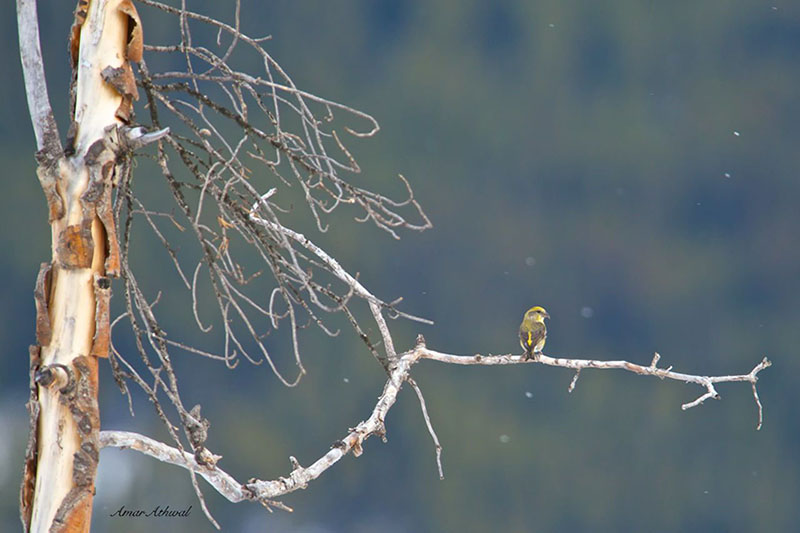Around this time of the year where snow resides, you may see birds on the road. They are not looking for food, but for grit or small stones to help break down food in their gizzard. All bird’s stomachs are in two parts. The first is much like our stomach, called the proventriculus or glandular, where the digestive enzymes start the digestion process. The second part of a bird’s stomach is the gizzard or muscular stomach. Birds with thick gizzards will pick up small stones, sand, and small shells to help break down hard foods like seeds and nuts. Grit will wear out over time, therefore it needs to be replaced on a regular basis.
During the winter, when much of the ground is covered by snow, the roads are the places to go for birds like this male and female Red Crossbill to find grit. Thanks to Banff National Park’s highway team for dropping sand on the roads for safer travel. These two crossbills are taking a break from enjoying the abundance of spruce cone seeds to add more grit to their gizzards for breaking down their food.
On a side note. Hornbill, a bird not found in the Canadian Rockies. Unless you’re day dreaming. They are found in subtropical places in Africa and Asia. The male Hornbill will fill its gizzard with fruits and then shed off the entire membrane of its gizzard to present its mate with a “bag of fruit”.

